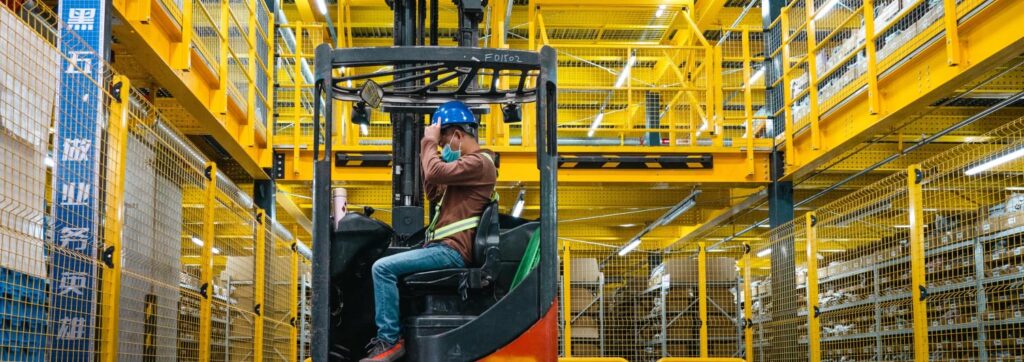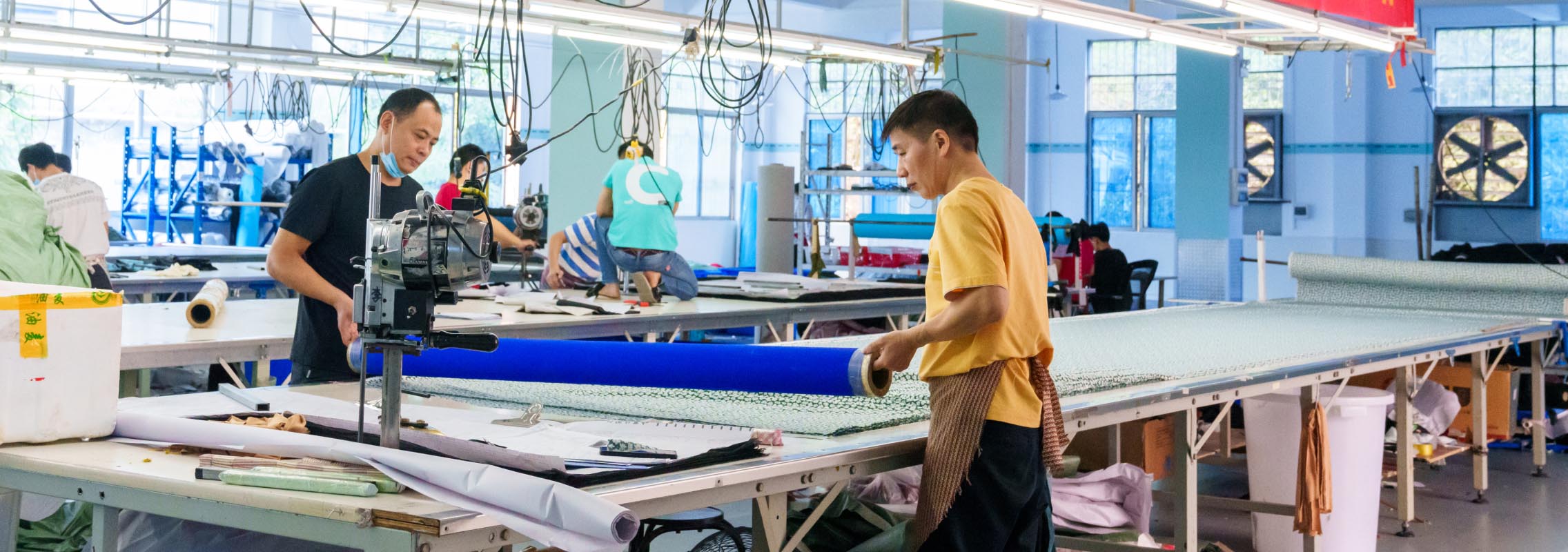We set science-based targets to fight climate change – both within our operations and in collaboration with our suppliers and partners.
Our CLIMATE Risks and Impact
We are exposed to a range of climate-related risks that could significantly affect SHEIN’s business performance and operations, adding to the urgency for us to assess and manage these risks proactively.
In 2022, we engaged an external consultant to analyse the strategic impact of such risks on SHEIN over the next five years. Using a data-driven framework model, we modelled the financial implications, expressed as 5-year Earnings Value at Risk (EV@R), under different climate scenarios based on the latest global climate model data and shared socioeconomic pathways.
Below is a summary of the types of risks we are exposed to:
- Physical risks include potential operational disruptions and asset damage due to extreme weather events and long-term shifts in climate. These risks can directly impact our own facility operations, our supply chains, and the availability of raw materials.
- Transition risks arise from various factors such as changes in policy, market dynamics, consumer preferences, and investor sentiment. Policy risks involve increased carbon pricing and regulatory changes, while market risks include shifts in consumer behaviour towards sustainable products, increased scrutiny from investors prioritising low-carbon investments, and potential reputational damage from failing to address climate change adequately.
The risk assessment analysis informs our strategic planning, as well as our adaptation and mitigation plans, helping us to strengthen SHEIN’s resilience to climate change. At the same time, we recognise that climate change presents unique opportunities for innovation, enabling SHEIN to develop and implement cutting-edge solutions that could drive growth.
Our Emissions Reduction Roadmap & Initiatives

SHEIN’s net-zero science-based target by 2050 has been validated by the Science Based Targets initiative (SBTi). SBTi has also approved SHEIN’s near and long-term science-based emissions reduction targets. SHEIN’s targets are from a 2023 base year.
SHEIN 2024 GHG Emissions

In 2024, we observed a 4.4% decrease in emissions arising from our own operations, i.e. Scope 1 and 2, while Scope 3 emissions under our near-term SBTi targets increased by 12.8%. Our business continued to experience strong growth in 2024, and our operations diversified with the expansion of SHEIN Marketplace. We recognise that we still have much more work to do on our climate mitigation journey and are committed to driving progress, aligned to the company’s growth and expansion.
We continue to take steps to demonstrate greater accountability in our decarbonization journey. As of May 2025, we have approved near- and long-term science-based emissions reduction targets with the SBTi, and the SBTi has verified our net-zero science-based target by 2050. In 2024, with the support of Anthesis Group, we developed a decarbonisation roadmap to guide our progress towards our near- and long-term emissions reduction targets. Through this process, we identified priority decarbonization actions, focusing on areas with potential for greater emissions reduction impact, and evaluated them based on their technical, operational, and financial feasibility. Across these priority actions, we implemented several key initiatives in 2024 that led to estimated emissions reductions of 16,582 metric tons of CO₂e across Scope 1 and Scope 2, as well as 867,721 metric tons of CO₂e for Scope 3, compared to estimated emissions reductions of 556,664 metric tons of CO₂e in 2023 across Scopes 1 to 3.
Analysis of our GHG emissions inventory shows that the majority of our emissions continue to occur beyond our direct operations, with nearly all of our carbon footprint attributed to Scope 3 emissions. These Scope 3 emissions mainly stem from Category 1 (Purchased Goods and Services) and Category 4 (Upstream Transportation and Distribution), which together account for approximately 96% of our emissions under our near-term SBTi targets.
SHEIN is working to mitigate climate change both within our operations as well as across our entire value chain beyond our own operations, which depend on our collaboration with our suppliers and other value chain partners.
Scope 1 and 2 emissions: They account for only a small proportion of total emissions and are mainly linked to electricity usage. We are implementing programs to better manage and reduce the electricity we use in our offices and warehouses, as well as to expand our use of renewable energy. In 2024, 76% of electricity across the operations that we directly manage globally was from renewable sources, up from 72% in 2023.
Scope 3 Emissions (Split by Category)

Scope 3 emissions: We acknowledge that most of our emissions lie in scope 3, and significant work remains to be done. We will collaborate with our suppliers and other value chain partners to reduce emissions. In 2024, we launched several programmes to support our suppliers in their decarbonization journeys. For example, nearly 80 of our suppliers have adopted measures in line with our standardised energy efficiency guidelines1, resulting in an estimated 2,302 MWh of electricity saved annually.
We also promoted the adoption of rooftop solar energy in our supply chain, by connecting suppliers with third-party expert consultants who support the suppliers in developing custom solar PV installation plans, and providing cash incentives to support the installations. As of end 2024, approximately 114 MW of solar capacity has been installed across 114 supplier sites. During the year, these supplier factories consumed 53,583 MWh of solar energy, resulting in an estimated reduction of 28,752 metric tons of CO₂e2.
Like many online retailers, a significant portion of our emissions can be attributed to the transportation and distribution of our products to customers. In total, the 2024 initiatives aimed at managing our transportation and distribution emissions resulted in an estimated total carbon reduction of 668,800 metric tons of CO₂e, as certified by the independent verification agency SGS, in accordance with ISO 14064-2. Examples include reducing transport distances by optimising air freight and increasing the use of sea freight and trucking, which led to an estimated reduction of approximately 502,273 metric tons of CO₂e. We also improved packaging efficiency by reviewing the size, design, and materials used for transportation packaging during air freight, resulting in a further 143,924 metric tons of CO₂e saved.
As we continue working towards our decarbonisation targets, we recognise the need not only to scale these priority actions across our entire value chain, but also to collaborate with partners to advance technological innovations and systemic change. In the longer-term, we seek to focus on investments that can support the commercial availability of textile-to-textile recycled materials, more carbon-efficient transportation modes, greater adoption of circular business models, and the exploration of diversified carbon removal solutions.
1. Examples of such measures include insulation of steam pipes, use of motion-sensor lights in non-operational areas, energy-saving steam traps, replacement of outdated steam traps, zoning control of lighting switches, addition of signage, and replacement of traditional lamps with energy-saving lights.
2.The photovoltaic electricity usage data was collected over the course of the project, reflecting 12 months of consumption at the supplier’s factory. The data covers two periods: the 12 months ending October 2024 and the 12 months ending December 2024.
